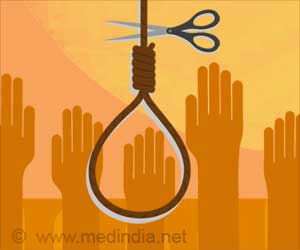Pre-enlistment mental disorders account to nearly 60% of soldier suicide attempts, occurring more commonly among non-deployed U.S Army soldiers than demographically similar populations of civilians.

Althoughthe suicide death rate in the U.S. Army has historically been below the civilian rate, the Army rate began climbing at the beginning of the Iraq and Afghanistan conflicts, and by 2008, it exceeded the demographically matched civilian rate (20.2 suicide deaths per 100,000 vs. 19.2). Concerns about this increase led to Army STARRS, a partnership between the Army and the NIMH designed to help understand and address this issue. The initial findings published today include three papers that use different strategies to evaluate suicide risk and protective factors among service people, including an analysis comparing the prevalence of mental disorders among Army and civilian populations.
"Some of the differences in disorder rates are truly remarkable," said Ronald Kessler, McNeil Family Professor of Health Care Policy at Harvard Medical School and senior author of the paper on mental disorder prevalence. "The rate of major depression is 5 times as high among soldiers as civilians, intermittent explosive disorder 6 times as high, and PTSD nearly 15 times as high."
The most common disorders in the Army STARRS survey were attention deficit hyperactivity disorder (ADHD) and intermittent explosive disorder (IED), or recurrent and uncontrollable anger attacks, Kessler said.
The findings suggest that soldiers did not have higher rates of most "internalizing disorders" (anxiety disorders and depression) than civilians before enlistment, but rather developed high rates of these disorders only after they enlisted in the Army. The situation was different, though, for "behavioral disorders" (ADHD, IED and substance abuse), which were much more common among young people who subsequently enlisted in the Army than those who did not. Rates for these disorders increased even more after enlistment. Nearly half of current soldier internalizing disorders and 80% of behavioral disorders started before enlistment
"These results are a wake-up call highlighting the importance of outreach and intervention for new soldiers who enter the Army with pre-existing mental disorders," said Robert Ursano, Chair of the Department of Psychiatry at the Uniformed Services University of the Health Sciences and co-principal investigator of Army STARRS.
Advertisement
"It is striking that nearly 50% of the soldiers who attempted suicide made their first attempt before joining the Army, as applicants are asked about any history of suicide attempts in recruitment interviews and those who report such a history typically are excluded from service," said Matthew Nock, professor of psychology at Harvard University and lead author of this report on soldier suicidality.
The researchers added that intermittent explosive disorder is of special importance because it was the only disorder found to predict suicide attempts after developing suicidal thoughts, which has important implications for screening and prevention. This important finding shows that it is not only depression and PTSD that predict suicide attempts.
A third JAMA Psychiatry article by lead author Michael Schoenbaum of NIMH examined the suicide and accident death rates in relation to basic sociodemographic and Army experience factors in the 975,057 regular Army soldiers who served between Jan. 1, 2004, and Dec. 31, 2009, charting variations in the rates based on a variety of factors including sex, race, education level and rank.
Source-Eurekalert









